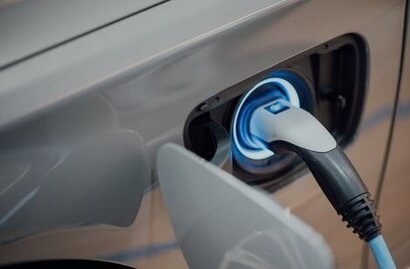
Mina’s EV Report - Autumn 22 showed that those motorists who could charge at home saw real life costs rise by only 4p per kWh since the end of last summer to an average of 30p per kWh. For those that need to charge in public though, the story was different, with an average price rise of 14p to 70p per kWh over the same period.
Mina’s data across more than 60,000 charging events showed the average price of home electricity for EVs stayed level during September at 26p, then rose to 30p in October, and 31p in November.
“The claims that the cost of running an EV is now matching, or costs more, than petrol and diesel, is just not accurate when you look at how people really charge” said Mina CEO Ashley Tate. “Our data shows that home is by far the main source of electricity for most drivers, with 92 percent of all charging undertaken there. Home charging is still incredibly good value, and our data shows that there is scope for more savings because the 30p per kWh average suggests not enough drivers are accessing the much lower EV-specific or off-peak tariffs available. But even at the current 30p per kWh average, a 70 kWh capacity EV being charged fully at home in September would have cost, on average, £18.20. By late November it would have been £21.70. Assuming a 250-mile range, that’s an average increase of only 1.4p per mile.”
When the increasing efficiency of new electric cars is factored in, Mina has found that the average real-life pence per mile cost across all journeys only went up 2p per mile during those three months.
“Even with the on-set of winter affecting battery efficiency and the electricity price rises, the increasing number of new, more efficient cars and drivers getting smarter about how they use and charge them has seen real-life, on-the-road costs rise only marginally” Mr Tate said. “It doesn’t play to the vocal number of EV critics, but this is the reality.”
One issue that still hits drivers though is the Advisory Electricity Rate for business mileage reimbursement. Mina’s analysis found that despite the rise to 8p per mile in the autumn, 80 percent of all journeys charged at home (and 100 percent of public charging) still cost more, meaning business drivers would be out of pocket using today’s rate. When compared to the previous 5ppm AER figure, a staggering 96 percent of charges at home, and 100 percent in public, were over this rate.
Mina’s data also allows it to see behavioural trends, and in the vast majority of cases public charging is being used as a top up rather than for a full charge. In that sector, prices have risen far quicker because unlike home electricity, which is capped, public charging energy is not so providers have no choice but to pass it on.
They have also been hit by increased business rates and all the other inflationary issues that companies face: rising maintenance costs, wages and interest rates. Added to which is that through the autumn and winter there is usually less cheap renewable energy available.
“Yes, there is a need for public charging, and costs have risen in that sector, but when you look at real- life examples rather than making theoretical assumptions, the vast majority of EV drivers aren’t doing full charges in public, which mitigates against the price rises” Mr Tate said.
Key findings from the Mina EV Report - Autumn 22:
The average cost of home charging was 30p per kWh, up 4p from the summer.
Public charging rose 14p, to 70p per kWh.
92 percent of all charging is undertaken at home.
80 percent of all journeys charged at home, and 100 percent of public plug-ins, cost more than the Government’s 8p per mile Advisory Electricity Rate.
The peak plug-in time on the UK’s public network is between 7 and 8am on weekdays, and the second busiest time is between 11am and midday.
There are more than 800 home electricity tariffs, making it confusing for drivers to pick the right one for them.
In Mina’s latest EV Report you can find more analysis and insights into charging costs, tariff choices, charging behaviour and real-life examples of EV drivers.
For additional information:

